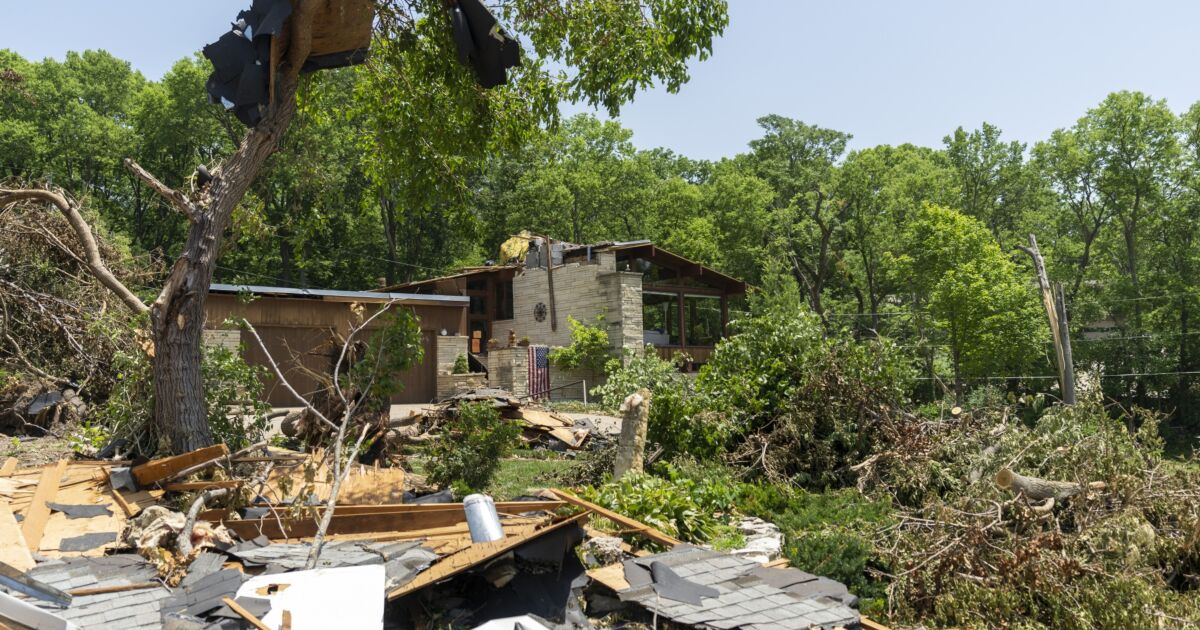Why insurers should encourage consumers to review coverage gaps

Last year, just shy of 1,500 tornadoes touched down in the U.S. – which is up by more than 300 events from 2020. These severe weather events caused billions in damage for U.S. homeowners. And the impact of tornadoes is greater than the destruction of homes, property and more; tornado damage can leave lasting financial burdens on the homeowners they affect.
Despite homeowners and renters’ insurance policies covering damages and losses from tornadoes, they typically don’t make the policyholder whole again – despite guaranteed replacement cost coverage. And because homeowners often have immediate expenses caused by damage sustained in a storm, they cannot wait 30 days or more for the claims process to play out. Left hanging with immediate and hefty out of pocket expenses, these concerns can feel like a second blow to families with limited cash savings on hand.
The 2022 tornado season is here, and it’s expected to be even more active than 2021. Therefore, insurers should encourage homeowners to review and understand their current coverage to identify potential gaps in their policy that could be a source of financial risk.
What’s covered and what’s missing
Homeowners first need to know what their current policy covers and doesn’t cover to safeguard against the financial concerns after disaster strikes. Many homeowners may not know the hidden challenges they face when it comes to their coverage. For example, the average homeowner is underinsured by 20% of the home’s value. This hinders policyholders because, even if they receive money from a claim, it may not cover the actual amount needed to replace or repair what was lost. Furthermore, current inflation has caused the cost of goods and services to rise, meaning a policy may not cover the actual cost of repairs – leaving homeowners on the hook for the difference.
Additionally, even if a disaster happens, that doesn’t always mean that the policy in place will cover the damage sustained from a tornado. Since the 1980s, about 70% of disaster damage has failed to be covered by insurance. All this to say, homeowners may not receive the proper financial support they need if a tornado touches down and causes damage.
Savings aren’t enough
Families are oftentimes financially vulnerable when it comes to severe weather preparedness. The average American household savings is only $3,800, with 60% of Americans having no emergency fund at all. Bouncing back from a tornado is often very expensive, with the cost for tornado repairs ranging anywhere from $4,600 to $17,000.
Increasing insurance deductibles, additional wind deductibles and the fact that most home insurers now pay homeowners only the actual cash value of their roof all add to homeowners’ financial concerns. If your roof is 10 years old or older, you will likely have to pay half the costs to fix it on top of your deductible. Since the roof is a common damage point for tornadoes, the financial resilience of families with limited cash savings can become jeopardized.
While homeowners wait for the claims process to take place, their emergency funds can deplete quickly as they cover immediate expenses. A coverage plan that falls short of their financial needs puts them at risk of not being able to carry on with regular life and makes day-to-day expenses – like buying groceries or paying bills – a burden.
Claims processing
Waiting for a claim to get paid can be stress-inducing as homeowners are forced to pay for immediate expenses out of pocket. The home insurance claims process typically takes at least 30 days for a payout, with an adjuster sometimes having to first pay the homeowners a visit, further slowing down the process. This can cause even more concern for homeowners who don’t have the money or the time to wait for the process to unfold.
Homeowners need flexible funds – often from supplemental insurance policies – quickly after a severe weather event that doesn’t get tied up in the traditional claims process. That way, they can get back on their feet faster following a tornado. By understanding the gaps in their current policy, and how these can impact their financial security and different ways to cover these gaps, homeowners can be prepared.
Since this year is expected to have intense, severe weather, homeowners can’t leave their financial well-being to chance. Instead, proactivity now can mitigate some of the risks that come with managing the out-of-pocket expenses caused by tornadoes and other natural disasters to protect financial well-being and build resiliency.


